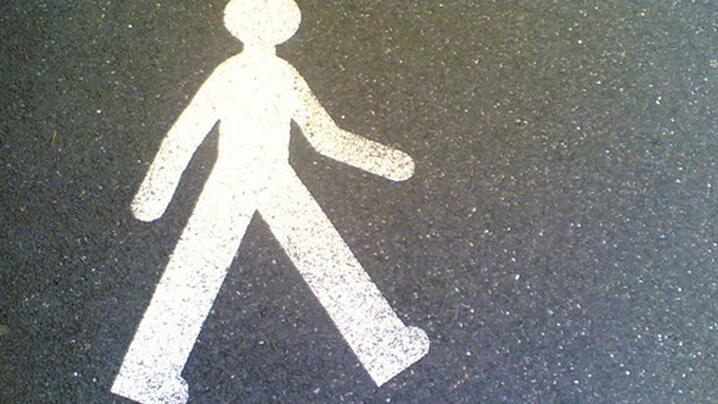
Walking the streets of a city or town is one of the best ways to get a feel for the character of a place. After focusing on car traffic for decades, many cities are now returning to walking as an important component of local transportation. A walkable community can promote public health, improve air quality, give greater autonomy to non-drivers, and even reduce road and parking congestion.
Local governments must tend to many details in keeping streets and sidewalks safe, efficient, and attractive for pedestrians, but citizens typically have a more intuitive understanding of a place’s walkability. For example, smart growth advocate Kaid Benfield describes a simple neighborhood test: can an 8-year-old safely walk somewhere to buy a popsicle and get back home before it melts? If so, it’s a walkable neighborhood.
In his recent post at the Atlantic Cities, Benfield uses photos from his travels to illustrate how easy and beautiful certain places are to walk around in. Each photo tells a story about how transportation in these cities often means being able to walk from place to place. Your feet carry you from the store to school or from work to home as easily as a car does in many other places. I am lucky enough to have lived and walked in two of the cities he depicts, and I experienced firsthand what it is like to be a citizen of a walkable city.

phalinn
The first city was Galway Ireland. In the spring semester of my junior year of college I studied at the National University Ireland Galway. It was the first time I ever lived in a city without access to a car, and I quickly learned the wonders of walking everywhere. I discovered short cuts through quaint alleyways and bridges across rivers. I discovered coffee shops where there were always chocolate chip scones and pubs that played live music. Even when it rained—and with Galway being on one of the rainiest coasts in Ireland, it did—I walked. I wore out three pairs of shoes, learned the difference between “water resistant” and “waterproof” rain jackets, and fell in love with the freedom and flexibility of living in a city that caters to walkers.
When I graduated from college I was excited by the freedom to choose a new place to live. As I began to plan my move, something kept coming to mind. I wanted a place that felt like Galway. I was not even sure what that meant until I visited Washington DC, where I could walk everywhere. I had no desire to own a car, and wanted to live in a place that valued walking just as much as driving. I knew instantly that this was where I was going to live.

tedeytan
As sustainability becomes increasingly important to local governments, local leaders are becoming more interested in walking as clean transportation. However, many cities also want to make places more pedestrian friendly to support economic development, especially in downtown and Main Street shopping areas. Community health advocates encourage regular walking as free and easy exercise, especially for children going to school. If a place is easy to navigate on foot, then it most likely has many of the same qualities that so many people love in places like Galway and Washington.
Since so much of what makes a place walkable is the responsibility of the local government, the Knowledge Network has several resources to help build walkable communities.
- Designing Walkable Urban Thoroughfares: A Context Sensitive Approach, a report from the Institute of Transportation Engineers, describes the design process and the argument for more walkable urban settings in which cars and pedestrians coexist.
- An article from PM Magazine, Healthy Communities, A Vision of Connectivity,describes how Warwick Township, Penn. has built walking trails to increase the health of the community and the connectivity of the people who live there.
- Making City More Walkable, a case study from Arlington, Va., shows how local leaders took the community’s desire to be more walkable and made it a reality. local leaders
- The city of Rancho Cucamonga, Calif. conducted an inventory of missing sidewalks as a first step to fill in the gaps pedestrians face across the city.
For more resources like these, visit topic pages for information on Walking, Sidewalk, Street, and Road Maintenance, Transportation, Sustainability, Smart growth, Planning, and Active living.
New, Reduced Membership Dues
A new, reduced dues rate is available for CAOs/ACAOs, along with additional discounts for those in smaller communities, has been implemented. Learn more and be sure to join or renew today!
